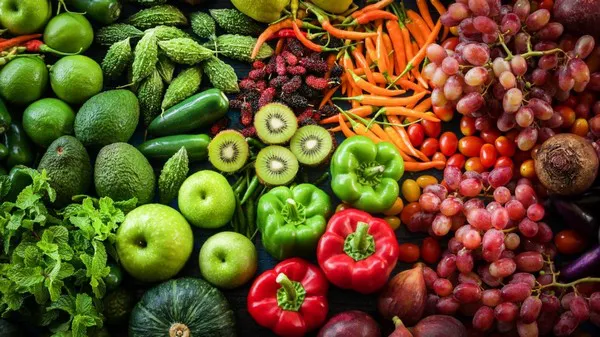When it comes to a balanced and healthy diet, protein is an essential nutrient that plays a crucial role in building and repairing tissues, supporting the immune system, and maintaining overall health. While protein is often associated with animal-based sources, such as meat, fish, and dairy, there is a wide variety of plant-based options available for those who follow a vegetarian or vegan lifestyle. In this article, we will explore the world of vegetables and highlight those that are particularly high in protein content. Additionally, we will delve into the benefits of plant-based proteins, addressing common misconceptions, and offering tips on how to incorporate these protein-rich vegetables into your daily meals.
Understanding Plant-Based Proteins
Plant-based proteins are derived from vegetables, legumes, grains, nuts, and seeds. Unlike animal-based proteins, plant-based sources offer additional benefits, such as being lower in saturated fat, cholesterol-free, and rich in dietary fiber. Moreover, they contain a wide range of vitamins, minerals, and phytonutrients that contribute to overall well-being.
SEE ALSO: What is the Best Source of Protein for Vegetarians? A Comprehensive Guide
The Protein Content of Vegetables
While vegetables are not typically considered high-protein sources, some varieties stand out for their relatively high protein content. The following vegetables are particularly noteworthy for those seeking plant-based protein options:
1. Edamame (Soybeans)
Edamame, young and green soybeans, are a protein powerhouse, offering approximately 18.5 grams of protein per cooked cup. They are also rich in essential amino acids, making them a complete protein source – a rarity among plant-based foods. Edamame is a versatile ingredient that can be enjoyed as a snack, added to salads, stir-fries, or even blended into dips like hummus.
2. Lentils
Lentils are legumes known for their exceptional protein content, boasting around 18 grams of protein per cooked cup. Besides being a valuable source of protein, lentils are packed with fiber, iron, and folate. They come in various colors, such as green, red, brown, and black, each with a slightly different taste and texture. Lentils can be used in soups, stews, salads, and vegetarian burgers.
3. Chickpeas
Chickpeas, also known as garbanzo beans, are a popular legume with a protein content of approximately 14.5 grams per cooked cup. Aside from protein, chickpeas are rich in dietary fiber, folate, and various minerals, including iron and phosphorus. They are commonly used in hummus, salads, curries, and roasted as a delicious snack.
4. Black Beans
Black beans offer an impressive 15 grams of protein per cooked cup. They are an excellent source of plant-based protein and are also loaded with fiber, antioxidants, and various vitamins and minerals. Black beans can be used in soups, salads, tacos, and as a filling for vegetarian enchiladas.
5. Green Peas
Green peas are often overlooked as a protein source, but they contain approximately 8 grams of protein per cooked cup. They are also high in dietary fiber, vitamin C, and vitamin K. Green peas can be served as a side dish, added to stir-fries, or mixed into pasta dishes and risottos.
6. Spinach
Spinach, a nutrient-dense leafy green, provides about 5 grams of protein per cooked cup. Additionally, spinach is an excellent source of vitamins A, C, and K, as well as iron and calcium. Incorporate spinach into salads, smoothies, omelets, or sauté it as a simple side dish.
7. Broccoli
Broccoli is not only a great source of vitamins and minerals but also contains around 4.5 grams of protein per cooked cup. It is rich in vitamin C, vitamin K, and folate, making it a valuable addition to any diet. Enjoy broccoli in stir-fries, salads, or simply steamed with a drizzle of olive oil and a pinch of salt.
8. Brussels Sprouts
Brussels sprouts offer approximately 4 grams of protein per cooked cup, along with being a good source of fiber, vitamin C, and vitamin K. Roast them in the oven or sauté with garlic and olive oil for a flavorful and nutritious side dish.
9. Asparagus
Asparagus contains about 4 grams of protein per cooked cup and is renowned for its high levels of vitamins A and K. Grill, steam, or roast asparagus to bring out its natural flavors and enjoy it as a side dish or part of a vegetable medley.
10. Artichokes
Artichokes are a unique vegetable with an impressive 4 grams of protein per cooked cup. They are also high in fiber and rich in antioxidants. Artichokes can be steamed, roasted, or marinated and make an elegant addition to salads and pasta dishes.
Incorporating Vegetable Proteins into Your Diet
Including protein-rich vegetables into your daily meals can be both delicious and satisfying. Here are some tips to help you make the most of these plant-based protein sources:
1. Combine Complementary Proteins: While most plant-based proteins are not complete sources of all essential amino acids, you can easily compensate for this by combining different protein-rich vegetables. For example, pair lentils with rice or chickpeas with quinoa to create a complete protein meal.
2. Experiment with Recipes: Don’t be afraid to try new recipes and cooking methods with these vegetables. Experiment with various spices, herbs, and cooking techniques to bring out unique flavors and textures.
3. Create Meatless Meals: Incorporate these vegetables into meatless meals such as veggie burgers, vegetarian curries, and hearty salads for a satisfying and nutritious dining experience.
4. Snack Wisely: Keep roasted chickpeas or edamame as a handy protein-packed snack option instead of reaching for processed snacks.
SEE ALSO: High-Protein Snacks: A Guide to Boosting Nutrition and Satiety
5. Add to Soups and Stews: Boost the protein content of your soups and stews by adding lentils, black beans, or chickpeas. These legumes also add a hearty texture and rich flavor.
Delicious Recipes Incorporated High-Protein Vegetables
Here are some delicious and protein-rich recipes that incorporate high-protein vegetables:
1. Spicy Chickpea and Quinoa Salad
Ingredients:
1 cup cooked quinoa
1 can (15 oz) chickpeas, drained and rinsed
1 cup cherry tomatoes, halved
1 cucumber, diced
1/4 cup red onion, finely chopped
1/4 cup fresh parsley, chopped
1/4 cup feta cheese (optional, omit for a vegan version)
2 tablespoons olive oil
1 tablespoon lemon juice
1 teaspoon ground cumin
1/2 teaspoon chili powder
Salt and pepper to taste
Instructions:
In a large bowl, combine cooked quinoa, chickpeas, cherry tomatoes, cucumber, red onion, and parsley.
In a small bowl, whisk together olive oil, lemon juice, ground cumin, chili powder, salt, and pepper to make the dressing.
Pour the dressing over the salad and toss gently to coat.
If desired, sprinkle feta cheese on top before serving.
Enjoy the refreshing and protein-packed salad!
2. Lentil and Vegetable Stir-Fry
Ingredients:
1 cup cooked green lentils
1 cup broccoli florets
1 cup sliced bell peppers (assorted colors)
1 cup sliced carrots
1 cup snow peas
3 tablespoons soy sauce
2 tablespoons sesame oil
1 tablespoon rice vinegar
1 tablespoon honey or agave syrup (for a vegan version)
2 cloves garlic, minced
1-inch piece of ginger, grated
2 green onions, sliced
Sesame seeds for garnish
Instructions:
Heat sesame oil in a large skillet over medium heat.
Add minced garlic and grated ginger, sauté for a minute until fragrant.
Add broccoli, bell peppers, carrots, and snow peas to the skillet. Stir-fry for about 5 minutes or until the vegetables are slightly tender.
Add cooked lentils to the vegetables and stir to combine.
In a small bowl, whisk together soy sauce, rice vinegar, and honey (or agave syrup) to make the sauce.
Pour the sauce over the vegetables and lentils, tossing everything together to coat evenly.
Garnish with sliced green onions and sesame seeds before serving.
Serve the flavorful and protein-rich stir-fry over brown rice or quinoa.
3. Edamame and Avocado Sushi Rolls
Ingredients:
2 nori seaweed sheets
1 cup cooked sushi rice
1/2 cup edamame, shelled
1 avocado, sliced
1/2 cucumber, julienned
Pickled ginger, for serving
Wasabi, for serving
Soy sauce, for dipping
Instructions:
Place a bamboo sushi rolling mat on a clean surface and put a nori sheet, shiny side down, on the mat.
Wet your hands to prevent sticking, then spread half of the sushi rice evenly over the nori, leaving about 1 inch at the top edge.
Arrange edamame, avocado slices, and cucumber juliennes in a line across the center of the rice.
Carefully roll the nori sheet around the fillings, using the bamboo mat to shape it into a tight roll.
Repeat the process with the second nori sheet and remaining ingredients.
Slice the sushi rolls into bite-sized pieces using a sharp knife.
Serve with pickled ginger, wasabi, and soy sauce for dipping.
Enjoy these protein-packed and wholesome sushi rolls!
Conclusion
Plant-based proteins, especially those found in vegetables, offer a plethora of health benefits and can be an excellent addition to any diet. Whether you are following a vegetarian or vegan lifestyle or simply looking to incorporate more plant-based foods into your meals, these protein-rich vegetables provide a delicious and nutritious alternative to animal-based sources. By exploring different recipes and being creative in the kitchen, you can savor the flavors and reap the rewards of these valuable vegetable proteins. So, go ahead and enjoy the abundant and diverse world of plant-based proteins!
[inline_related_posts title=”Related Topics” title_align=”left” style=”list” number=”3″ align=”none” ids=”1260,1148,1151″ by=”categories” orderby=”rand” order=”DESC” hide_thumb=”no” thumb_right=”no” views=”no” date=”yes” grid_columns=”1″ post_type=”” tax=””]

































